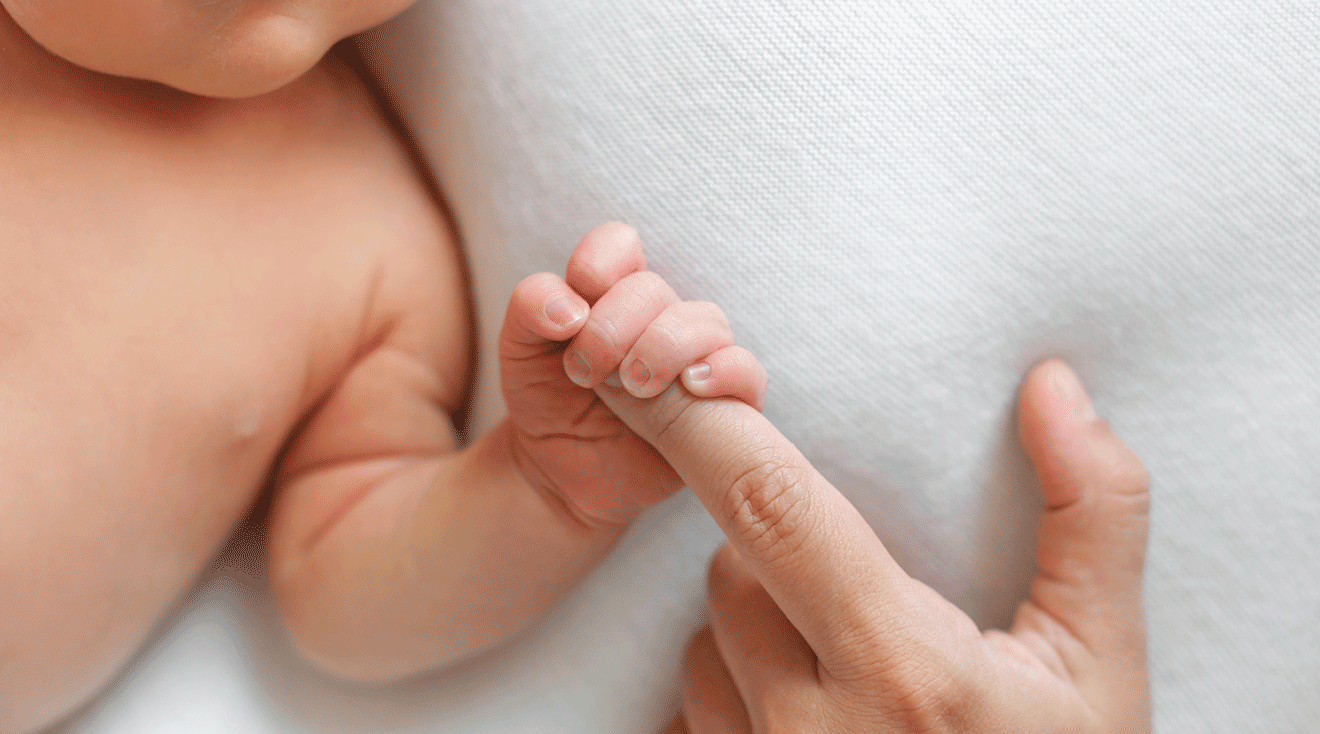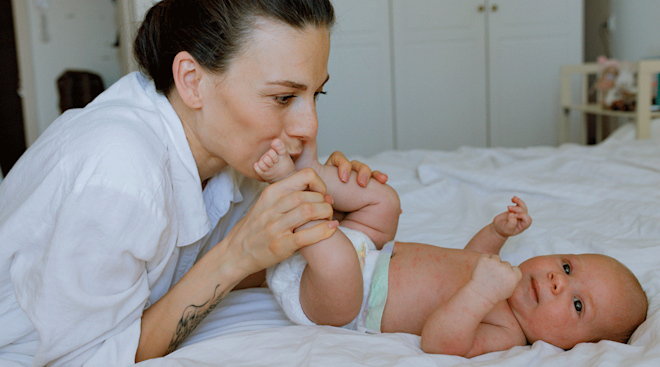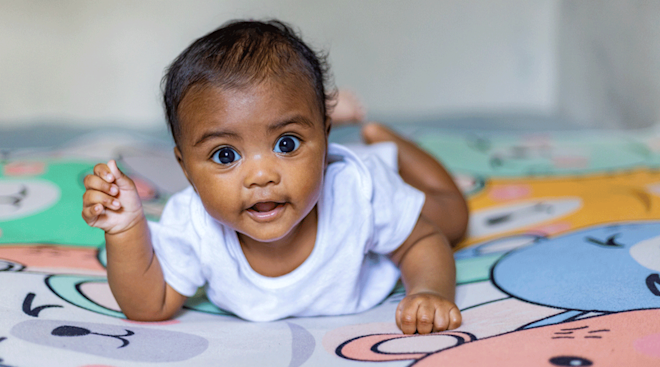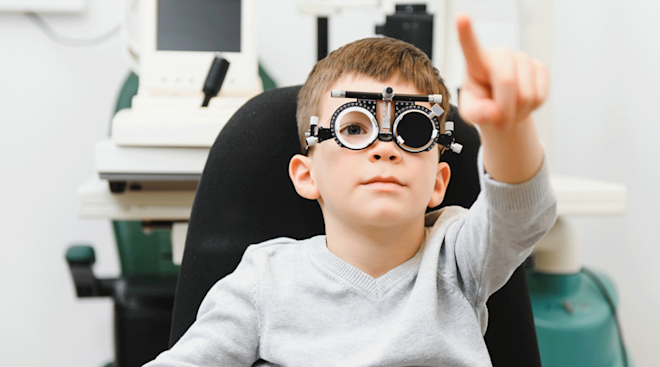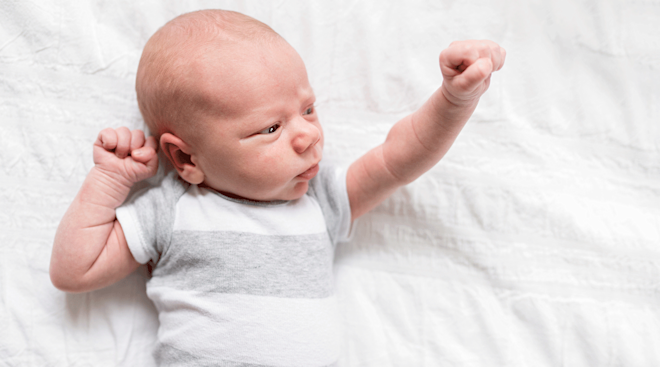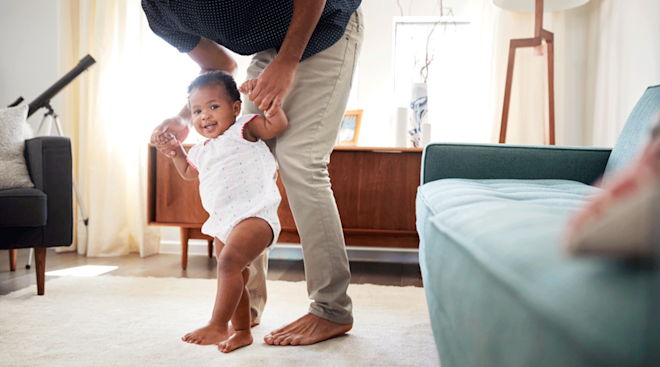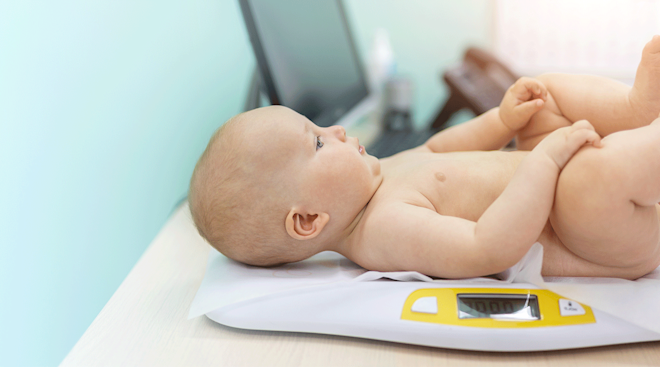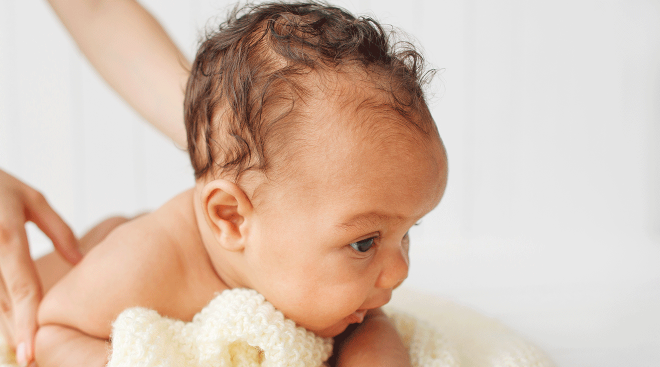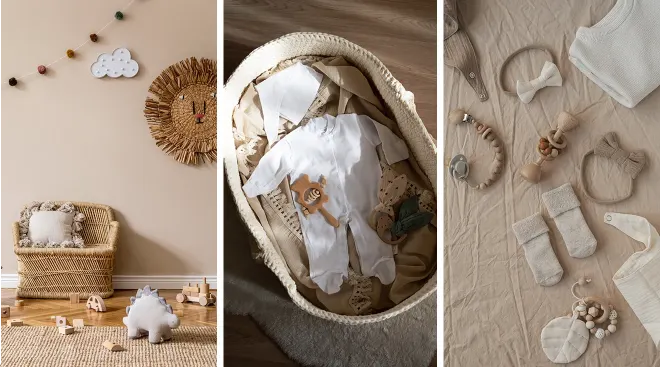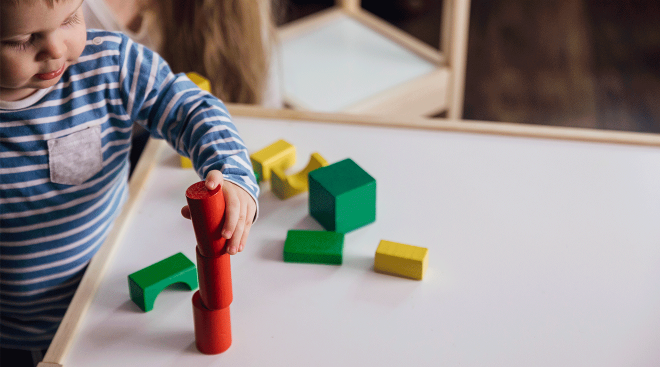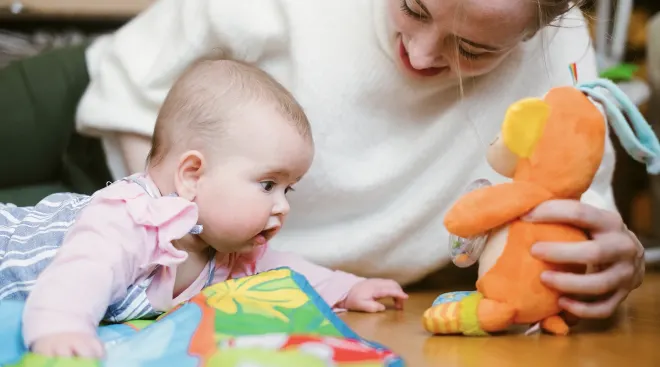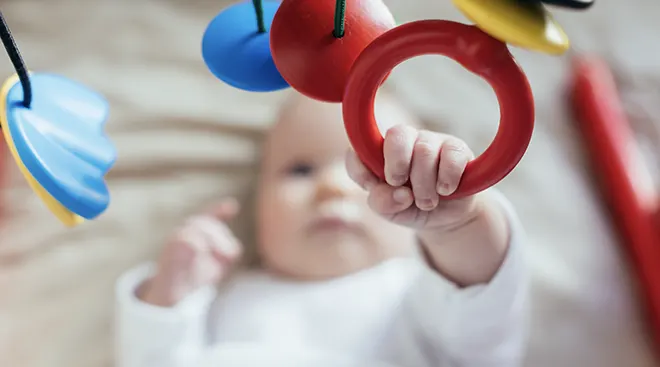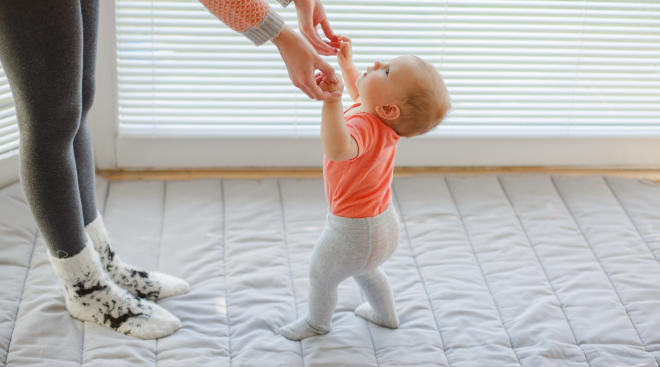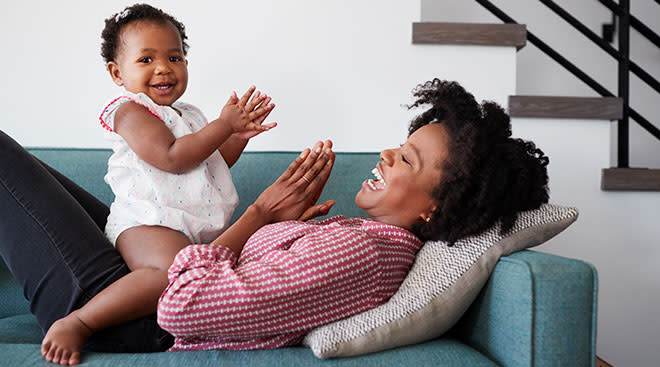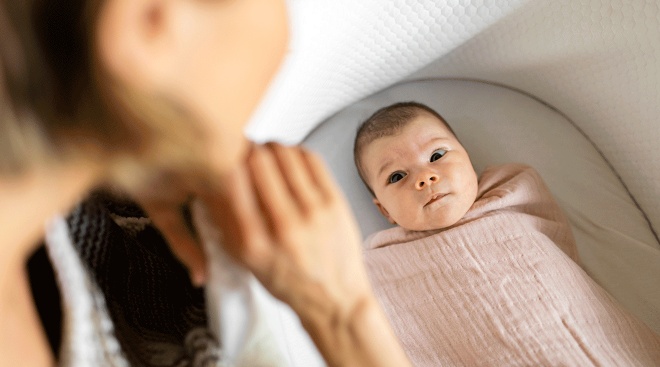What Is the Palmar Grasp Reflex in Babies?
On the scale of newborn yawns to post-nap stretches, one of the cutest things your tiny human does is wrap their itty bitty fingers around yours. While this might feel like one of the first displays of affection from baby, it’s actually one of their newborn reflexes. It’s called the palmar grasp—and it’s actually involuntary. So what causes the palmar grasp reflex, and at what age do babies grow out of it and more purposefully grasp your hand? Here, experts break down everything to know about the palmar grasp reflex and how it helps their general development.
The palmar grasp is one of many newborn reflexes. There’s also the sucking reflex, startle reflex and rooting reflex, according to the American Academy of Pediatrics (AAP). The palmar grasping reflex describes the way a baby’s fingers flex and grip when you stroke their palm or place an object in it. “This response, which involves both sensory and motor nerves, is regulated by higher brain centers and the spinal cord,” explains Caroline Martinez, MD, a pediatrician at Mount Sinai Kravis Children’s Hospital in New York. Similar to the plantar grasp, which involves baby curling their toes when the sole of their foot is stroked, the palmar grasp helps infants hang onto and explore their surroundings.
The palmar grasp reflex develops as early as 16 weeks of gestation. It’s why infants in utero or in the womb can sometimes be seen clenching their fists or grabbing at the umbilical cord, says Joanna Parga-Belinkie, MD, FAAP, a clinical neonatologist at Children’s Hospital in Philadelphia. She adds that the reflex gets stronger between weeks 32 and 37 of pregnancy, so it should be well-developed in newborns who are carried to term (38 weeks or later).
Not only is the palmar grasp a “fascinating aspect of early human development, [it] also plays a crucial role in baby’s growth and neurological health,” says Martinez. Below, some ways the palmar grasp reflex helps baby.
It promotes baby’s early exploration
The palmar grasp helps baby explore their environments before they master fine motor control—one of the last things infants achieve developmentally, Parga-Belinkie says. The palmar grasping reflex promotes tactile learning and lays the foundation for voluntary movement and other motor skills. It allows baby to bring objects towards themselves, which they can then hold, feel for texture and, eventually, shake. “By repeatedly clenching their hands around objects, infants strengthen the muscles and nerves involved in grasping, paving the way for more complex hand movements later on,” Martinez says, adding that the reflex also “stimulates tactile receptors in the hands, promoting the development of the sensory system.”
By the time infants master grasping and bringing objects to their midline (typically between 3 and 6 months), the palmar reflex typically disappears to make way for voluntary oral exploration, says Parga-Belinkie, noting that as frustrating as it can be to see baby perpetually putting objects in their mouth, it’s also developmentally normal.
It may improve baby’s instincts
The palmar grip reflex can be traced back to a time when our evolutionary ancestors lived in trees and needed to grasp onto their mother’s fur to protect against falls and predators, explains Martinez. It also freed up their parents to move and forage more freely. In fact, tree-climbing primates such as chimpanzees and gorillas still exhibit the same palmar grasp reflex we see in human babies. “This suggests that the reflex has been evolutionarily conserved because it provides significant survival benefits for infants,” she explains.
While human parents no longer need to forage for food, the palmar grasp reflex still supports baby’s survival in a few ways, Martinez notes:
- Increased feeding success: The palmar grasp allows baby to “instinctively cling to their mother’s breast or bottle,” she says, which ensures that baby is able to maximize their milk intake during feedings. “This increased feeding success is crucial for their survival in early life.”
- Increased protection: The palmar reflex grasp helps baby hang onto their parents’ body or clothing, which could potentially reduce the risk of falling and other injuries, Martinez says. “This is especially important in the first few months of life when infants have limited head and neck control.”
Improves bonding with caregivers
Because it can take two to three months for infants to recognize faces and smile with purpose, the palmar grasp can help caretakers feel loved by and connected to their baby. “Even though infants will grasp whatever is placed in their hands, when it’s a parent’s finger or hand, it can make the family swoon,” Parga-Belinkie says. Feeling baby cling to you can stimulate the release of oxytocin, a hormone that promotes bonding, attachment and feelings of closeness that help foster healthy and secure emotional bonds.
Although most caregivers would happily hold onto their baby’s little hands forever, the palmar grasp reflex tends to diminish over time. According to the AAP, it peters out between 5 and 6 months. If it doesn’t, you’ll want to check in with your pediatrician to ensure baby’s nervous system is developing properly, notes Parga-Belinkie.
There may be some benign reasons why baby isn’t demonstrating the palmar grasp reflex; these could be related to how the reflex is elicited or the baby’s state of alertness, Martinez says. “However, in some cases, it might indicate issues with neurological development or peripheral nerve function,” she adds. Full-term babies who don’t display the palmar reflex grasp could have nerve injury or underdeveloped nerves in the hand, an issue with their spinal cord or a problem with their nervous system, Parga-Belinkie says. If you notice baby doesn’t have a palmar grasp reflex, consult with your pediatrician for a neurological exam. They’ll want to observe other reflexes and assess baby’s overall motor function and responsiveness to identify potential issues, such as a delivery injury (i.e. damage to the brachial plexus, the nerve roots in the shoulder that help control the movements of the hands.
Regardless of the reason, it’s important to realize that the palmar grasp is just one facet to baby’s development. To ensure baby’s development is on track, bring them in for regular checkups and let your pediatrician know if you have any concerns. And remember, every child is different and will develop at their own pace. “Development is on a spectrum,” Parga-Belinkie says. “It doesn’t happen the same way for every baby.”
Please note: The Bump and the materials and information it contains are not intended to, and do not constitute, medical or other health advice or diagnosis and should not be used as such. You should always consult with a qualified physician or health professional about your specific circumstances.
Plus, more from The Bump:
Caroline Martinez, MD, is a pediatrician at Mount Sinai Kravis Children’s Hospital in New York, specializing in developmental delays and disabilities. She earned her medical degree from the State University of New York Downstate Medical Center and completed her pediatric residency at Mount Sinai.
Joanna Parga-Belinkie, MD, FAAP, is a clinical neonatologist at Children's Hospital in Philadelphia and assistant professor of pediatrics at University of Pennsylvania. She earned her medical degree from Mount Sinai School of Medicine and completed her pediatric residency at Children's Hospital Los Angeles, University of Southern California.
American Academy of Pediatrics, Newborn Reflexes, March 2022
Learn how we ensure the accuracy of our content through our editorial and medical review process.
Navigate forward to interact with the calendar and select a date. Press the question mark key to get the keyboard shortcuts for changing dates.

































